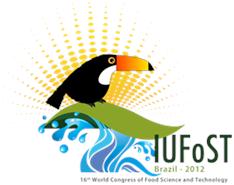Presentation at IUFoST XVI World Congress of Food Science and Technology, Brazil

R. Perren, 2012, Developments in roasting and thermal pasteurization of tree nuts, Presentation at the XVI World Congress of Food Science and Technology, 5.-9.8.2012, Foz do Iguaçu, Parana State, Brazil.
Tree nuts present an important group of plant foods whose structure and chemical composition make them both valuable nutritionally and attractive for sensory reasons. The sensory appeal of tree nuts is often completed in a roasting step creating the desired flavor, color and texture properties caused by chemical reactions and dehydration. Otherwise, roasting may damage cellular structures increasing oxygen flux into the cells and reducing the oxidative stability of highly unsaturated lipid fraction. Hence, selection and control of product moisture and temperature as well as dwell time over the entire roasting process is crucial for quality and shelf life.
Since recently, hygienic standards of raw and roasted nut products may include a kill step for pathogenic microorganisms as already required by the US food legislation for almonds since 2007. Because the roasting degree may vary depending on raw material and desired product properties, dry roasting may not be considered as a safe inactivation process, so a pasteurization procedure in humid conditions must be implemented during roasting. Today, flexible roasting equipment is available which combines optimal roasting with safe pasteurization. Otherwise, gentle pasteurization processes are available to treat raw or roasted tree nuts without noticeable alteration of flavor, color or texture.




